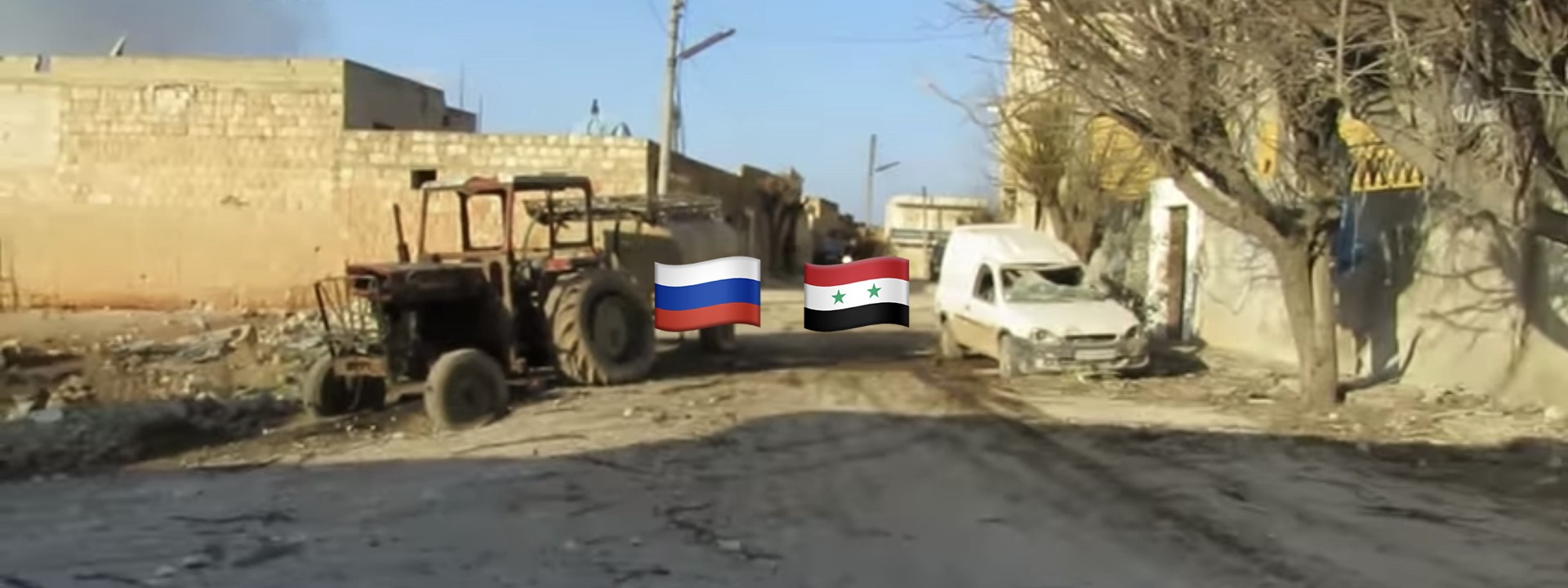#PutinAtWar: Russian Bombs, Syrian Civilians
Investigating the January 28 bombing in and around Saraqib, Syria that killed 14 civilians
#PutinAtWar: Russian Bombs, Syrian Civilians

Investigating the January 28 bombing in and around Saraqib, Syria that killed 14 civilians

As the Russian military presence in the Afrin region of Syria remained unclear throughout January, there was little doubt about their activities in Idlib province. The Syrian Observatory for Human Rights released a statement claiming airstrikes intensified on January 28 in Idlib province, including the town of Saraqib (Saraqeb), which killed at least 14 civilians. The statement did not specify or speculate whether Russian or Syrian forces were responsible for these military operations.
The deaths of 14 civilians, including women and children, failed to capture the attention of western media outlets and were reported on primarily by local Syrian media outlets.
https://www.yenisafak.com/en/world/airstrikes-kill-14-civilians-in-syrias-idlib-3033467
On the same day, an official announcement by the local Council of Saraqib began to circulate on the internet and claimed Russia was behind the attack. Furthermore, the statement claimed Saraqib was hit 48 times from the early morning with conventional and internationally-banned weapons, including cluster munitions, napalm, parachute-borne missiles, and others. There were no official statements made by the Russian military officials.
https://twitter.com/montheretaky/status/957736064357208066
A video published by STEP News the same day at 15:23 (UTC) provided actual footage from Saraqib on January 28. A reverse image search of the video frames did not yield matching videos from the past, which suggested the video was authentic.
The very first frames of the video showed a flying aircraft. The video footage was shaky, but the outlines and the colors of the Russian Su-30SM fighter jet were clearly visible.

The aircraft captured in the video was the Russian Sukhoi Su-30SM (NATO reporting name: Flanker-C). The Syrian Air Force and other countries in the region do not possess these jets, yet a number of them were located at Khmeimim airbase and verified using open source satellite imagery. @DFRLab previously reported on the use of these aircraft in Kafr Zita in December, 2017.

A few more seconds into the video smoke plumes from the bombs dropped in urban areas began to rise.

By using landscape details in the video, we geolocated the exact position from where the video was taken. Through this method, we made an assessment of the approximate location where the S-30SM’s bombs landed. The location of the explosions was in the northern part of Saraqib, close to the town’s radio antenna.

Footage inlcuded later in the video confirmed the location as the town of Saraqib. One of the video frames detailed a water tower in the distance and a yard full of rubble. This location was also confirmed in the northern part of the city.

Here are the locations pinpointed on a map.
Conclusion
There is little to no doubt that Russian air force is actively involved in the bombing of rebel-held areas in Syria. The open source data provided a full set of evidence, which suggest that a Russian aircraft was deployed in the January 28 bombings that took the lives of 14 civilians. Media reports, Syrian Observatory for Human Rights, and Saraqib Council’s announcement were further supported by STEP News local video footage.
Apparently, the wall of silence strategy that Russian Ministry of Defense continues to use in Syria is working relatively well. Civilian deaths at the hands of Russian warplanes remain to be a consistent phenomenon in Syria with no apparent end in sight.
@DFRLab will continue monitoring Russia’s military actions and developments in Syria.
Follow along for more in-depth analysis from our #DigitalSherlocks.

